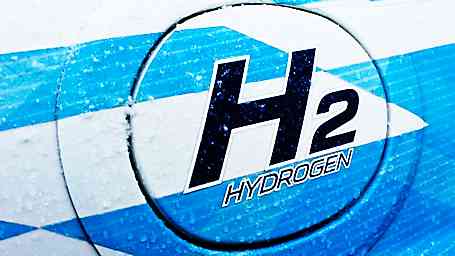
By Guest Blogger Philip Piletic
There has been a lot of public debate about the use of hydrogen to replace fossil fuels as the main source of energy. Some of the arguments in favor of spending more money on researching the use of hydrogen are that it is plentiful, sustainable and generates only water vapor that doesn’t contribute to pollution or global warming. While most people believe that developing clean energy sources is essential, until recently, hydrogen lagged behind in the race towards energy independence.
Size, weight, safety concerns and cost were considerations that prevented mass production of hydrogen fuel cells that produce electricity by converting hydrogen and oxygen into water. Part of the cost is attributed to creating the infrastructure necessary for large scale utilization. Currently, in the U.S., California has most of the 10 existing hydrogen filling stations. but has passed legislation to increase that number to 100 stations by the year 2024. London has only 2, compared to 1200 charging stations for electric cars.
One argument against the switch to hydrogen is that currently, two of the most common processes for isolating hydrogen, hydrogen pinch and steam reforming, rely on fossil fuels, including methane, to generate heat. Bio hydrogen production and thermolysis are other methods. Currently, the cleanest method of production is electrolysis.
In the process of electrolysis, water is split into oxygen and hydrogen using an electric current, with oxygen being produced on a positively charged electrode, and hydrogen on a negatively charged one. The two gases are prevented from reacting with each other by a membrane between the cathode and the anode. The hydrogen can then be compressed as a gas or in liquid form to be stored or transported for use. Currently, only about 5 percent of hydrogen is produced by clean electrolysis. However, both public and private research promise rapid advances in the clean production of hydrogen.
In addition to fuel cells used to power automotive vehicles, hydrogen has a number of other uses. Hydrogen gas can be used to reduce metal ore. Chemical industries use hydrogen to produce hydrochloric acid, ammonia, and methanol. The process of atomic hydrogen welding utilizes hydrogen gas. Ironically, processing fossil fuel also relies on hydrogen. Hydrogen is also the hydrogenating agent used to saturate oils and fats, making them healthier for consumption. Hydrogen fuel cells are used in submarines and weather stations. Hydrogen, in liquid form, is used as rocket fuel for space exploration.
One of the safety concerns being addressed is that of avoiding corrosion when mixing hydrogen with other liquid elements. This is especially important due to the fact that hydrogen is a highly explosive substance. Temperatures in processes utilizing hydrogen with other liquids, such as refining oil, must be strictly controlled because sealants are manufactured according to specific temperature guidelines and special valves are used in the process. Lessening dependence on oil and other fossil fuels such as coal has become an increasingly viable option for reducing our carbon footprint.
According to NPPD board member Mary Harding, said that switching from coal to hydrogen, even at one power plant, will “…keep more than a million tons of carbon out of the atmosphere.” That amount is equal to approximately 10 percent of the Nebraska Public Power District’s total carbon emissions each year. More power plants switching from coal to hydrogen, combined with a greater number of automobiles powered by hydrogen fuel cells, will make a huge difference in preserving our natural resources, including the air we breathe.
It has been estimated that hydrogen power obtained from renewable raw materials can reduce our carbon footprint by a full 70 percent compared to conventional gasoline powered cars. Vehicles powered with hydrogen fuel cells have a range of approximately 500 kilometers, compared to 200 kilometers offered by an electric battery. An additional advantage is that charging a hydrogen fuel cell takes just four minutes.
According to Rutgers University chemist Tewodros Asefa, “Hydrogen has long been expected to play a vital role in our future energy landscapes by mitigating, if not completely eliminating, our reliance on fossil fuels” Towards that worthy goal, researchers are continuing to create new technologies, such as carbon nanotube technology to make the vision of clean energy for manufacturing and mobility a reality.
Author bio:
Originally from Europe, Philip Piletic is currently situated in Brisbane, AUS where he lives and works for Process Systems. His primary focus is fusion of technology and business, and he loves to share his experience with others by contributing to several blogs and helping others achieve success.
Additional Sources:
- http://video.cnbc.com/gallery/?video=3000395371
- http://www.the-linde-group.com/en/clean_technology/clean_technology_portfolio/hydrogen_as_fuel/green_hydrogen/index.html
- http://www.the-linde-group.com/en/clean_technology/clean_technology_portfolio/hydrogen_as_fuel/green_hydrogen/index.html
- http://www.natureworldnews.com/articles/8092/20140716/hydrogen-replace-fossil-fuels-new-catalyst-will-help.html